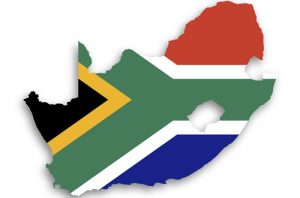
As the year draws to a close, it is time for entrepreneurs to take stock of business performance in 2016 and plan for the year/s ahead.
As expected, the medium term budget policy statement issued in October provided some guidance on the state of the country’s finances for the next three years.
There are some important take-aways for entrepreneurs, especially with regards to the potential shocks that might fundamentally change the economic climate.
The medium term budget highlighted some risks to the fiscal outlook, which are in essence, risks to the country’s economic performance. These are risks that, if they materialize, would undermine confidence and chill private sector investment into the economy.
Few surprises in the medium term budget statement
Save for the legal drama that unfolded around Finance Minister Pravin Gordhan, with a criminal case of fraud that has since been dropped looming over his head, the medium term budget held few surprises.
The budget deficit for 2016/17 was revised up to 3.4% from 3.2%. It is expected to reach 2.5% by the 2019/20 fiscal year. But the path has been laid for some changes in tax policy and/or further reduction in expenditure in the 2017/18 budget to be tabled next February. Government would like to raise R46 billion in new taxes over the next three years, R28 billion by next February.
In terms of adjustments, once again, higher education was the clear winner, with additional spending taken from other budget items to fund the national student aid financial scheme (R9 billion) and to maintain a zero fee increase for the poor (R8 billion).
The government seems intent on adopting a gradualist approach to the national health insurance (NHI) scheme, with additional funds being directed to contract more private doctors into it. The other major financial commitment to be taken on by government in the near term, namely the procurement of nuclear energy, will be led by Eskom. Whether the country can afford the nuclear build programme, and how Eskom would achieve that without straining resources, remains an open question.
The prospect of creating opportunities for greater private sector involvement in service delivery was not advanced much further by this budget policy statement. Government is still working on restructuring the airline sector. This is expected to see the introduction of private investors into government’s portfolio of aviation assets such as SAA, Mango and SA Express.
Over the past years, government has extended various incentive schemes to stimulate private sector investment, such as the Clothing and Textiles Competitiveness Programme, the Manufacturing Competitiveness Enhancement and theAutomotive Production and Development Programme. As might be expected, these programmes have come under review in a bid to reduce any ineffective spending. The results of the review process are expected by October 2017.
Key risks to the country’s financial sustainability
Government outlines four possible risks to the fiscal scenario: macroeconomic, policy and budget execution, contingent and accrued liabilities, and long-term spending commitments. The risks identified are very much in line with the issues that credit ratings agencies tend to highlight when assessing South Africa’s sovereign debt. Treasury was also at pains to point out the factors that limit risk in the country, such as the fact that most government debt is Rand denominated and does not mature in the short term.
The most significant risk to the fiscal outlook is slower than projected economic growth. National Treasury forecasts that GDP will grow by 0.6% in 2016 and 1% in 2017.
Policy and budget execution risks relate to the possibility that government may be forced to deviate from its expenditure ceiling by unanticipated demands (such as financing to keep university fees constant). A related risk is that of government departments not spending according to their plans.
Treasury reports that government has overspent by 0.2% over the budget since the introduction of the expenditure ceiling. Nonetheless risks to the current budget include pressures from the wage bill, underspending on infrastructure and exchange rate depreciation. Contingent and accrued liability risks relate mainly to government guarantees for entities such as Eskom, Prasa, Sanral, Post Office, Land Bank, Road Accident Fund and South African Airways.
Over the long term, Treasury projects that its social spending on grants and other benefits is sustainable, though demographic changes and the growth trajectory will determine the outcome. An older and larger than expected population would strain government finances, as would an economy that grows less than 2% over time. Municipal financing, especially the ability of municipalities to maintain infrastructure without straining budgets, is also identified as a long term risk.
Elusive ‘structural reforms’
It is quite telling that the most optimistic growth scenario projected by Treasury has as its main feature strong export performance as a result of the Rand’s depreciation. It has been said countless times that government policy should shift towards engineering some structural reforms to shift the economy into higher gear. The Global Competitiveness Index compiled by the World Economic Forum once again points to some areas of perceived weakness.
The trade balance for September came in at a surplus of R6.7 billion. For the year to date, the trade balance stands at a deficit of R9.95 billion, better than the R37.3 billion deficit recorded during the same period last year. The weak Rand continues to provide a boon for exporters.
Retail sales show the pressures that households are facing, rising by only 0.2% in August, down from 1.2% in August. This is the lowest reading for 2016 so far. Retail sales showed positive growth for the following categories: retailers in pharmaceuticals and medical goods, cosmetics and toiletries (6.6%); retailers in food, beverages and tobacco in specialised stores (2.6%); retailers in hardware, paint and glass (1.4%); and general dealers (1.2%). The category textiles, clothing, footwear and leather goods contracted by 1.1% whilst household furniture, appliances and equipment fell by 6.8%.
The pressure on households is likely to continue given a weak economy with limited job creation and wage growth in inflation-adjusted terms. The quarterly employment survey released in October shows that the economy shed 67 000 jobs in the second of 2016, with the total number of the employed coming to 9.21m in June 2016.
Manufacturing bounced back to 2.2% growth in August, up from a decline of 0.3% in July. Mining production was 0.2% lower in August compared to the previous, albeit a better reading than the -5.4% recorded in July.
The latest indicators show, as has been the trend over the past few years, a challenging economic climate for entrepreneurs to navigate. Consumer spending is tapering and the economy continues to operate beneath its potential. However, there are categories of businesses, such as export-oriented ones and retailers of pharmaceutical, medical goods, cosmetics and toiletries who have experiences positive outcomes.
About the author: Trudi Makhaya is CEO of Makhaya Advisory and a consulting economist to Mercantile Bank.


